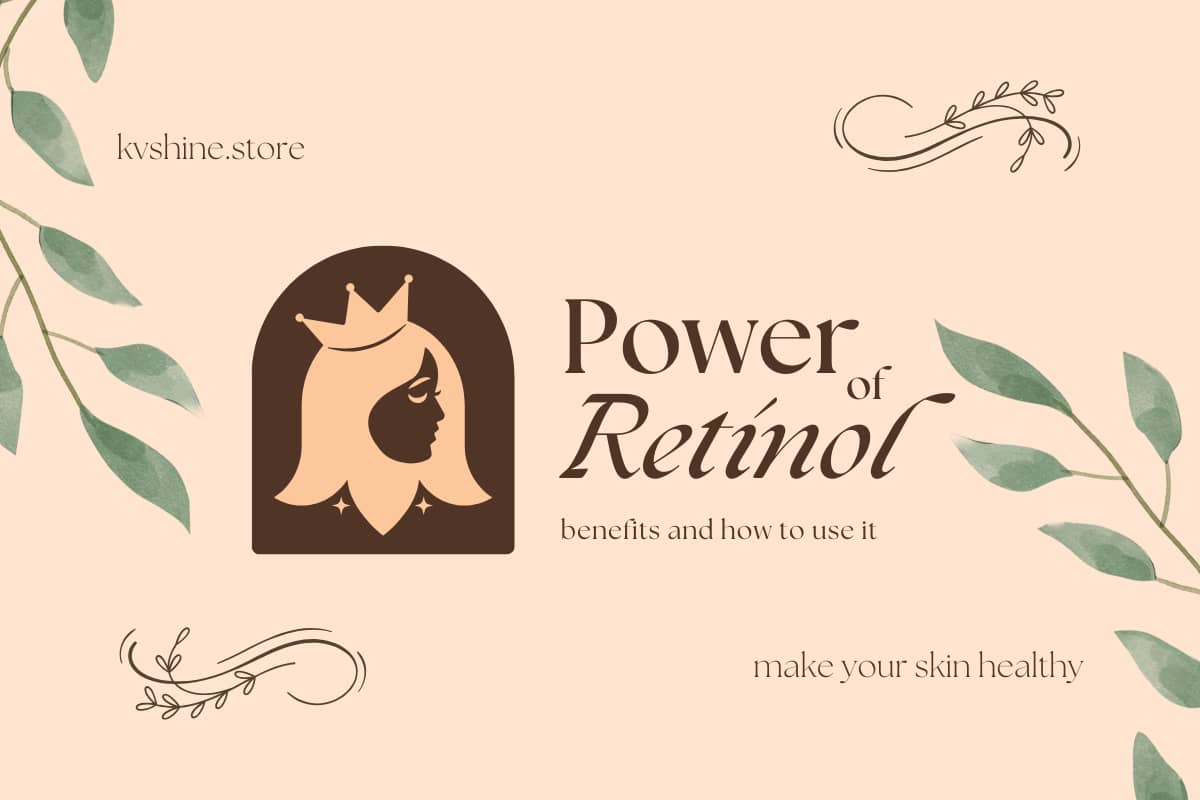Retinol is often hailed as the gold standard in skincare, but what makes it so powerful? Whether you’re battling acne, fine lines, or uneven skin tone, retinol can transform your complexion by accelerating cell turnover and boosting collagen production. But with great power comes responsibility—using retinol correctly is key to avoiding irritation and maximizing its benefits.
In this guide, we’ll explore what retinol is, how it works, its benefits, and how to incorporate it into your skincare routine for optimal results.
What Is Retinol?
Retinol is a form of Vitamin A that belongs to the retinoid family. It works by penetrating deep into the skin to stimulate collagen production, increase cell turnover, and unclog pores. Unlike prescription-strength retinoids like tretinoin, retinol is available over the counter in various strengths, making it more accessible for everyday skincare.

How Retinol Works
- Boosts Collagen: Helps reduce fine lines and wrinkles by stimulating collagen synthesis.
- Speeds Up Cell Turnover: Encourages new skin cells to replace old ones, revealing fresher, smoother skin.
- Unclogs Pores: Prevents acne by keeping pores clear and reducing oil buildup.
- Fades Hyperpigmentation: Helps lighten dark spots and even out skin tone.
The Benefits of Retinol
1. Anti-Aging Powerhouse
Retinol is one of the most effective ingredients for reducing fine lines and wrinkles. By stimulating collagen production, it helps maintain skin elasticity and firmness, making it a must-have for anti-aging routines.
2. Acne & Breakout Control
Retinol prevents clogged pores, reduces inflammation, and regulates oil production, making it a powerful ally against acne. However, it may cause initial purging before revealing clearer skin.
3. Brightens & Evens Skin Tone
Hyperpigmentation, sun damage, and dark spots fade over time with consistent retinol use. Its exfoliating properties help reveal a more radiant complexion.
4. Improves Skin Texture
By accelerating cell renewal, retinol smooths rough patches and refines skin texture, leaving it soft and supple.
5. Minimizes Pore Appearance
Retinol tightens pores by increasing skin elasticity and reducing excess oil production, making them appear smaller and less noticeable.
How to Use Retinol Safely
1. Start Slow
Begin with a low concentration (0.25% or 0.5%) and apply 2-3 times a week to allow your skin to adjust.
2. Apply at Night
Retinol makes skin more sensitive to sunlight, so always use it in your nighttime routine and follow up with sunscreen during the day.
3. Use a Pea-Sized Amount
A little goes a long way! Apply a pea-sized amount to your face, avoiding the delicate eye area.
4. Pair with Hydration
Retinol can be drying, so layer with a hydrating serum and moisturizer to keep your skin balanced.
5. Avoid Mixing with Harsh Actives
Do not combine retinol with AHAs, BHAs, or Vitamin C in the same routine, as this can cause irritation.
Best Retinol Products to Try
✔ The Ordinary Retinol 0.5% in Squalane – Great for beginners
✔ Paula’s Choice 1% Retinol Treatment – Potent formula for advanced users
✔ La Roche-Posay Retinol B3 Serum – Gentle, hydrating option
Conclusion
Retinol is a game-changer in skincare, offering anti-aging, acne-fighting, and brightening benefits. When used correctly, it can transform your skin, leaving it clear, youthful, and radiant. Start slow, stay consistent, and always protect your skin with hydration and sunscreen.
This ultimate guide ensures you harness the power of retinol safely and effectively. Ready to glow?
Are you ready to unlock the power of retinol? Let us know your experience in the comments! ✨







